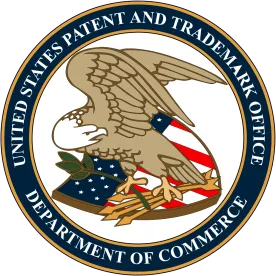In Eli Lilly and Co. v. Teva Pharmaceuticals International GmbH, the Federal Circuit affirmed the USPTO Patent Trial and Appeal Board decision upholding Teva’s patents directed to specific methods of treatment using an “effective amount” of certain antibodies. In reaching its decision, the court agreed with the PTAB’s construction of the claim preambles as limiting, and with its determination that obviousness required proof of a reasonable expectation of success in achieving the recited purpose.
The Patents At Issue
The patents at issue were Teva’s U.S. Patent Nos 8,586,045; 9,884,907 and 9,884,908. The patents recite specific methods of treatment using effective amounts of anti-CGRP antagonist antibodies:
Claim 1 of the ’045 patent recites:
1. A method for reducing incidence of or treating at least one vasomotor symptom in an individual, comprising administering to the individual an effective amount of an anti-CGRP antagonist antibody …
Claim 1 of the ’907 patent recites:
1. A method for treating headache in an individual, comprising: administering to the individual an effective amount of a humanized monoclonal anti[CGRP] antagonist antibody …
Claim 1 of the ’908 patent recites:
1. A method for treating headache in an individual, comprising: administering to the individual an effective amount of a humanized monoclonal anti[CGRP] antagonist antibody …
The IPR Decisions
Eli Lilly challenged the patents in Inter Partes Review (IPR) proceedings. The PTAB found that “the asserted prior art discloses or suggests each and every element of the challenged claims,” and “that a skilled artisan would have been motivated to combine the teachings of the prior art.” However, the PTAB “found no reasonable expectation of success,” and so upheld the patents.
Eli Lilly appealed.
The Federal Circuit Decision
The Federal Circuit decision was authored by Judge Lourie and joined by Judges Bryson and O’Malley.
The Federal Circuit decision focuses on Eli Lilly’s arguments that the PTAB erred in requiring evidence of a reasonable expectation of success in achieving specific results and applied “too high a standard” for a reasonable expectation of success.
The first argument rested in part on claim construction. The court rejected Lilly’s argument that the PTAB erred in interpreting the claims to “require that the recited methods be performed with an intentional purpose.” The court explained why the preamble of a method claim often is limiting:
The claims in this case are directed to methods, and more specifically to methods of using a composition for a specific purpose. Each claim is directed to a method for treating or reducing the incidence of vasomotor symptoms, and the method comprises a single step of administering an effective amount of a composition, namely, a humanized anti-CGRP antagonist antibody. This claim format is particularly relevant in our consideration of the claim as a whole because, while there is no bright-line rule for determining whether a preamble is limiting, we have generally construed statements of intended purpose in such method claims as limiting.
The court found the “effective amount” language further supported the limiting nature of the recited purpose:
[T] he claim language provides further support for the limiting nature of the preambles by including in each independent claim a step of administering an “effective amount” of an anti-CGRP antibody. The preambles provide the only metric by which one practicing the claim could determine whether the amount administered is an “effective amount.”
The court also noted that each preamble provided antecedent basis for the “the individual” recited in the body of the claims.
Having found the recited purpose of the preamble to be limiting, the court noted that obviousness therefore would require proving “that the skilled artisan would have reasonably expected success in administering a humanized anti-CGRP antagonist antibody for ‘treating at least one vasomotor symptom.’” The court emphasized that evidence of “motivation to combine” and “expectation of success” are separate legal requirements, citing its 2019 decision in Novartis Pharmaceuticals Corp. v. West-Ward Pharmaceuticals International Ltd.
[In West-Ward] we held that it was not enough for the appellant-defendant to have shown that a skilled artisan would have pursued the claimed method as a treatment option, but the appellant-defendant also had to show that the skilled artisan would have reasonably expected to achieve success in the treatment.
The court reviewed the PTAB’s findings on “expectation of success,” and was “not persuaded that the Board imposed a heightened standard, or otherwise erred, in its analysis of whether the prior art references would have given a skilled artisan a reasonable expectation of success.”
Obviousness of Method of Treatment Claims
It seems obvious that the recited purpose of a method of treatment claim should be given patentable weight, but it is not uncommon for an obviousness rejection to be based on prior art using the same active agent for a different purpose, with secondary references cited to provide some expectation of success. Here, the cited prior art included one reference that used a different active agent (a small molecule CGRP-receptor antagonist) for the same purpose (treatment of migraine) and another reference that tested the same type of antibodies in animals, but apparently did not discuss a possible impact on vasomotor symptoms.
Is it harder to establish an expectation of success when the claimed active agent has not been used clinically? Should a prior use matter if the recited purpose is not implicated by the prior use?




 />i
/>i

